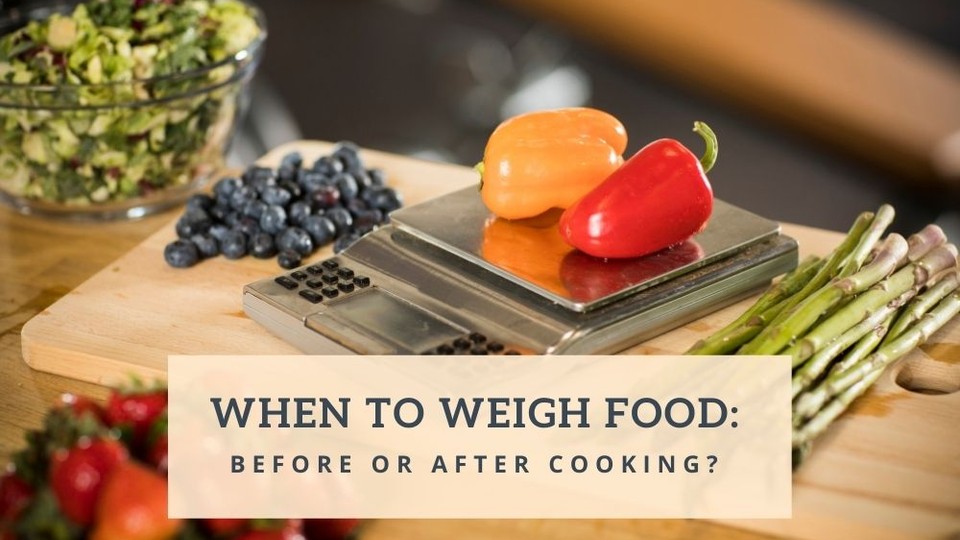
You may be on a path set towards fat loss, weight reduction, or muscle gain, and if so, you probably would have heard about counting your macros and calories. Both macro and calorie counting involve weighing your food, so the question of when it’s best to weigh your food arises.
If this lingering question has left you perplexed and somewhat doubtful, you’re at the right place.
In this article, we’ll discuss whether you should weigh uncooked or cooked food. On top of that, we’ll also touch on the differences between calorie counting and macro counting and suggest a few tools you may wish to try out to ease the entire process.
Weighing Raw Vs. Cooked Food
While some advocate for weighing food after you’ve cooked it, a larger proportion of people believe that weighing it in its raw or uncooked form is the better approach to take.
Many people recommend weighing, logging, and measuring your food before cooking, and there are several reasons why.
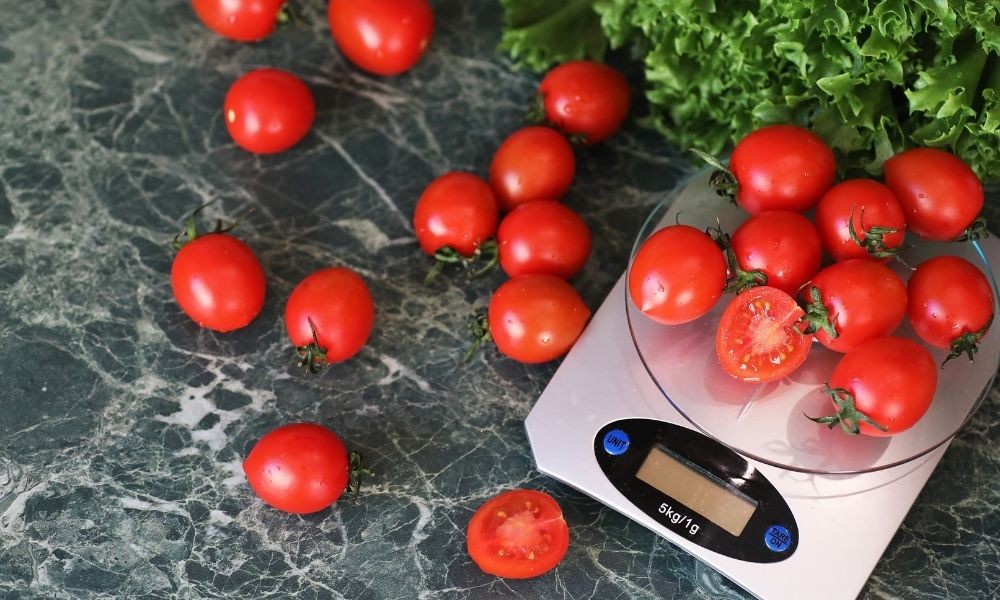
Weighing cooked food can cause discrepancies and inaccuracies as the cooking process can affect the final weight of the cooked ingredients. The type of cooking method you utilise may alter the amount of liquid present in the food, and hence, there is usually some weight loss or gain after cooking.
For instance, the weight of raw meat will be greater than that of cooked meat. In fact, the cooked weight of meat, poultry, and fish is generally reduced by about 25% from its raw weight. Veggies may even lose half of their weight after cooking! In contrast, starchy foods such as rice, pasta, or even boiled potatoes will absorb water while cooking, leading to increased weight after cooking.
Food logging apps like MyFitnessPal usually operate on numbers from standardised food packaging.
Nearly all (if not all) nutrition labels and nutritional fact panels will display the calorie count based on the weight of food in its current packaged form. That said, weighing food in its original state before it undergoes any form of cooking will yield the most accurate results.
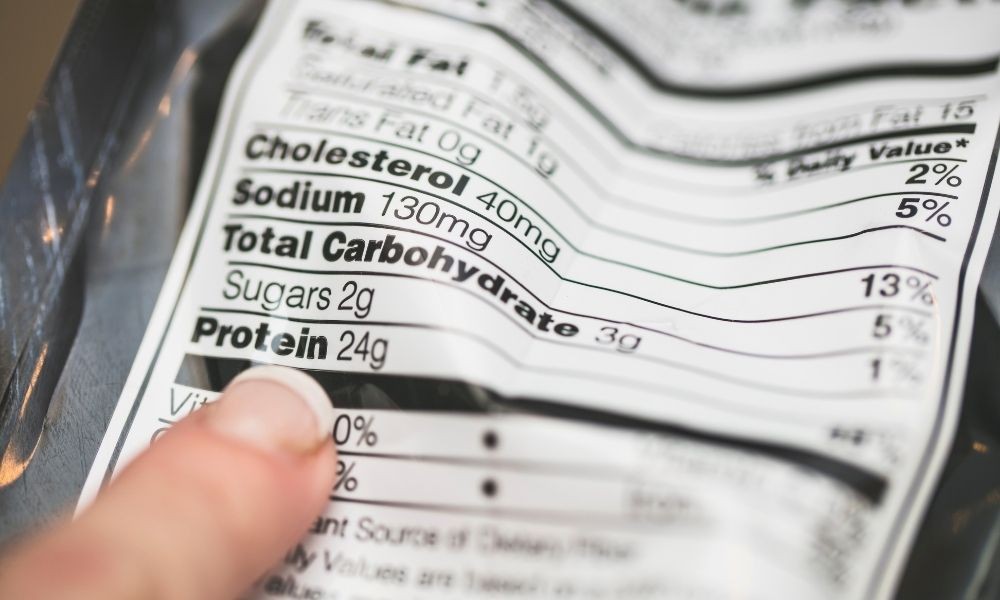
For certain types of foods, there may not be a stark difference between their cooked and uncooked weight. Nonetheless, even these seemingly minute differences may add up to quite a bit in the long run. If you’re keen on levelling up your health and fitness journey, accurate food logging will give you the upper hand in meeting your calorie or macro goals.
Furthermore, weighing all separate components before assembling your meal will allow you to keep track of seemingly ‘insignificant’ ingredients.
Say you’re rustling up a batch of sautéd chicken breast. You add a tablespoon or two of olive oil before lining the pan with a few pieces of chicken breast. After cooking, you weigh the portion of cooked chicken breast.
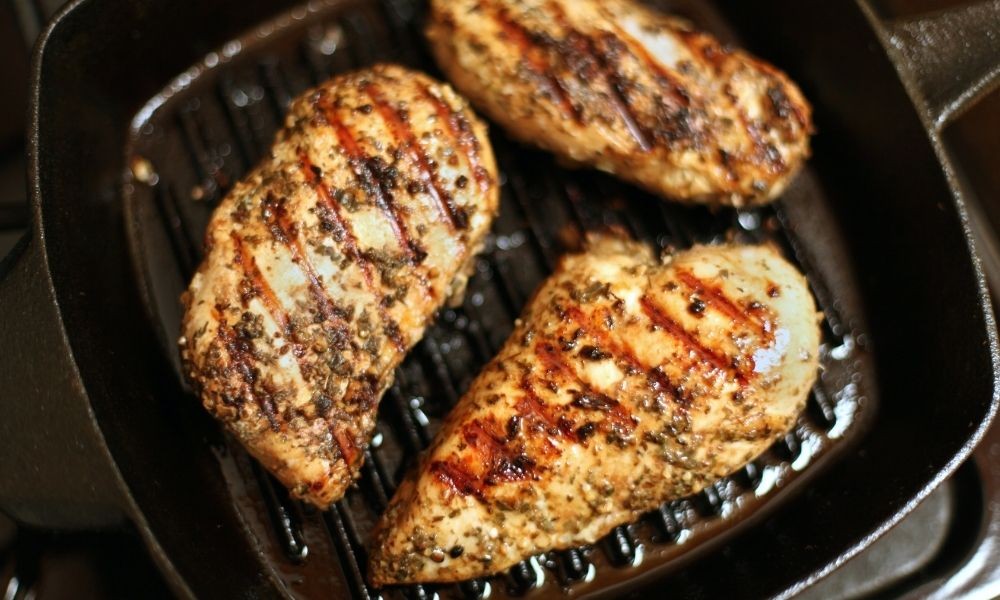
Unfortunately, the little bit of olive oil used in the cooking process is overlooked. If this occurs a few times, there probably won’t be much of a difference. However, if you’re logging all your meals, this may add up to a significant amount of calories and fats that were not accounted for.
Cumulatively, all these factors support the approach of weighing food before cooking rather than after.
However, you may, of course, choose the method that best suits your preferences. If you find that weighing cooked food is the most convenient and sustainable approach for you, then go ahead with it. Keep in mind that when inputting this information into your log, it should correlate to whether or not the food was cooked or raw.
And of course, it’s best to practise consistency, meaning that you should log food the same way, either all as cooked ingredients or uncooked ingredients. If not, this could skew the accuracy of your logs.
What Are The Benefits Of Weighing Your Food?
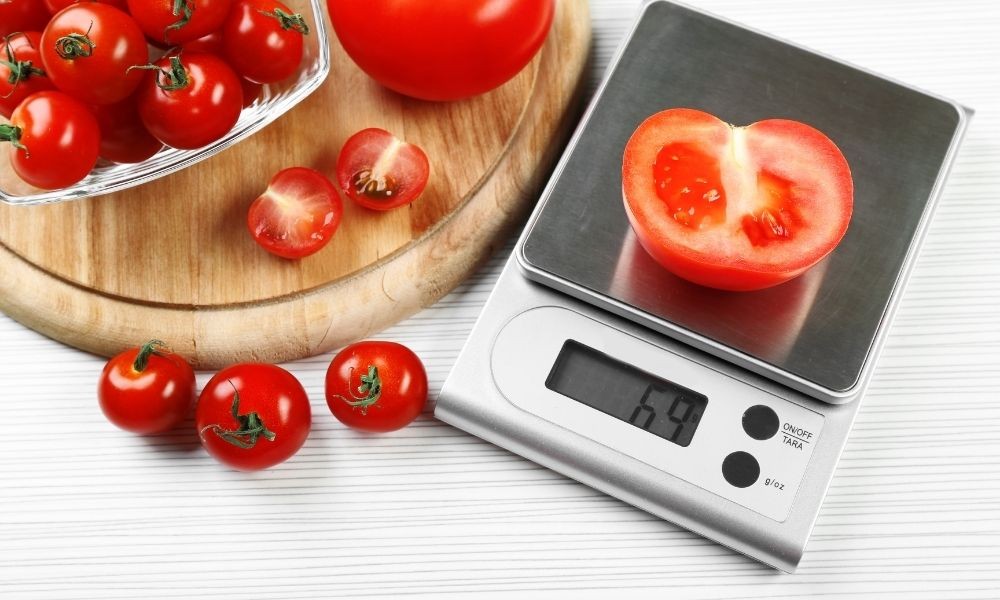
Unless you’ve mastered the art of eyeballing portions, your estimations will likely be off. The fact is, many people tend to underestimate the calories in their meals using the eyeballing method, and hence, you may be consuming more calories than recommended without realising it.
This is especially the case when dealing with calorie-dense foods, such as processed foods, sweets, fried foods, and sugary beverages. Hence, weighing your food will provide valuable insight into your actual daily intake of macronutrients and calories. This enables you to tweak (or massively transform) your dietary habits and meals accordingly.
Plus, the benefits of food logging and tracking calories or macros have been backed up by numerous research studies.
For instance, one systematic review analysed studies involving participants who performed dietary self-monitoring, including logging the types of foods, quantity, and meal timings. In this review, participants who did this on a more frequent and consistent basis were more likely to experience weight loss than those who didn’t [1].
Additionally, another study investigated the association between the frequency of food logging and the degree of weight loss obtained. In this study, participants who more frequently took note of the quantity and type of foods and beverages they consumed were more likely to experience weight loss than those who didn’t [2].
From another angle, tracking the nutritional value, macros, or calories of your homecooked meals will train you to better estimate and quantify those numbers in restaurant servings.
It’s not unusual to see restaurants dishing out insanely large portions of foods with a serving size that could cater to multiple people.
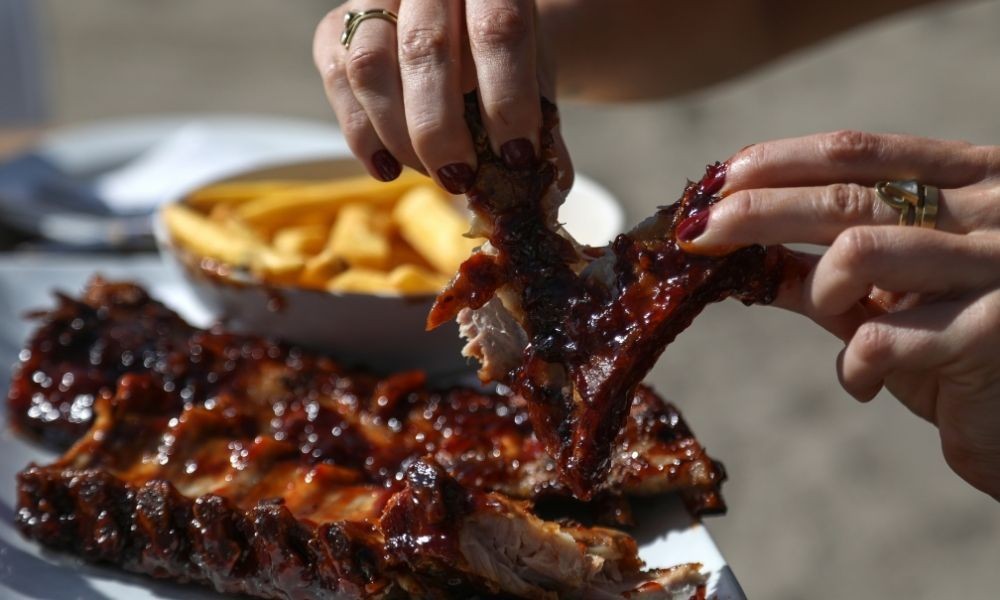
Often, we may take it upon ourselves to gobble up the entire portion, which may not be the best choice if we’re aiming for a healthy-eating streak. If you know that the portion sizes of your favourite restaurant are a little larger than what’s recommended, you can invite a friend or two along the next time to share the meal.
Ultimately, you want to avoid consuming calories that shoot through the roof because this could cripple your fitness journey and make it harder to achieve your set goals.
Tips on Using a Food Scale to Weigh Your Food
Using a food scale to attain the weight of your food in ounces or grams is said to be more accurate for counting calories or macros compared to using measuring cups or spoons.
Here are some tips on how to use a food scale to weigh your food and get the most accurate readings:
- As mentioned earlier, weighing your food before cooking rather than after is best. But in either case, whether you weigh your food before or after cooking, it’s important to stay consistent to prevent any major discrepancies.
- Don’t forget to use the “tare” function on your food scale if you’re using a bowl or container to weigh your portions.
- Make sure your scale is on a flat surface when you’re weighing your ingredients.
- If you’re handling an ingredient that does not come with a nutritional label (such as fresh meat or veggies), you can use a database such as the USDA website to attain the needed information.
Counting Calories Vs. Tracking Macros
Macros or macronutrients are the primary nutritional building blocks that form most of your daily dietary intake.
Fats, carbohydrates, and proteins are considered macronutrients, and each fuels your body with energy that can be quantified and calculated in a unit known as calories or joules. Compared to micronutrients such as vitamins and minerals, your body requires macronutrients in much more significant amounts.
The question is, “Should you count calories or track macros?”
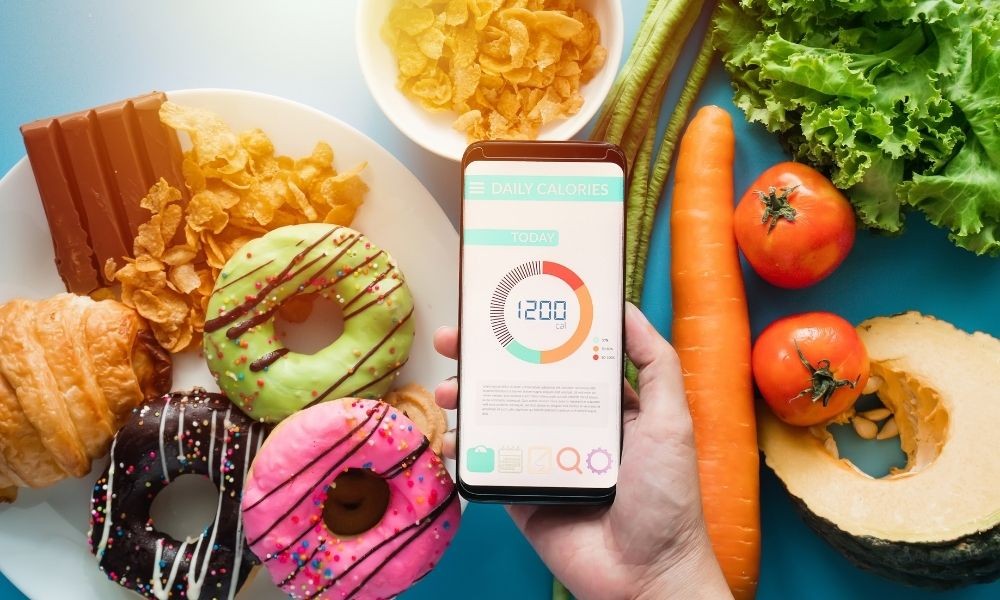
The truth is, each method comes with its own set of flaws and benefits.
The underlying logic of calorie counting stems from this: Weight loss can be attained when your body is in a calorie deficit, in other words, when you burn more calories daily than you consume.
A group of people believe that counting calories is a time-squandering approach that does not pay off, but countless research studies have shown that people who consume more calories than they burn end up gaining weight.
While the recommended daily caloric intake differs from person to person depending on their age, gender, activity level, and various other factors, calorie counting may help you keep tabs on the amount of calories you consume daily. Hence, it could prove to be an effective tactic in preventing overeating and tackling weight gain.
Compared to tracking macros, counting calories is a much more straightforward approach. But it only keeps track of the quantity of food (and calories) you consume. However, tracking your macros goes the extra mile.
By adopting the habit of tracking macros, you’ll be able to keep tabs on both the quality and quantity of food you eat, hence, painting a more well-rounded picture of the nutritional value of your daily meals. Tracking macronutrients allows you to adjust your meals so that you consume a certain percentage of each macronutrient daily.
You can consult a professional to find the best breakdown that caters to your needs. This is where tracking macronutrients will come into play, ensuring that your daily meals meet the set macronutrient goal.
To sum it up, counting calories is the simpler and less time-consuming method but only takes into account the number of calories you consume. On the other hand, tracking macros allows you to monitor the quality and quantity of your meals but requires more effort and time.
Getting Started
Counting calories and tracking macros may seem like a tedious and rather confusing task at the start. The good news is that you don’t have to do it alone! Be it a digital helpmate or a personal trainer; there are many outlets you can tap into to garner the support, advice, and information you need to help you kickstart your fitness journey.
Of course, if you’re looking to weigh food, it’s best to invest in a trusty and durable kitchen food scale. In addition to that, you can look into meal planner apps and other apps that can help you keep track of your macro and calorie intake, such as MyFitnessPal and Nutritionix Track.
Essentially, it all boils back down to consistency. While most people agree that weighing food before cooking is the best way to go, some might prefer to weigh their food after they cook. What’s important is to stick to either instead of weighing some meals before cooking and some after cooking.



